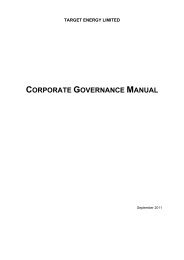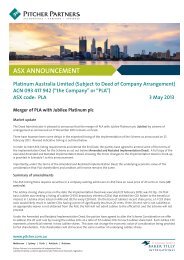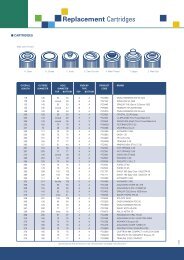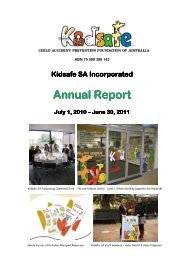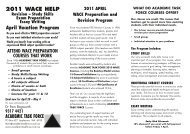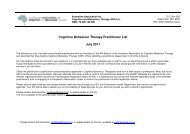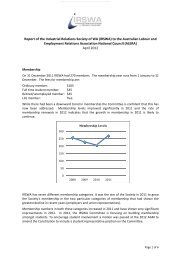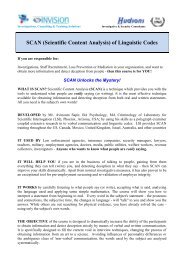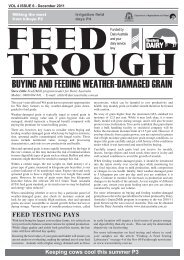Download - ABN Newswire
Download - ABN Newswire
Download - ABN Newswire
You also want an ePaper? Increase the reach of your titles
YUMPU automatically turns print PDFs into web optimized ePapers that Google loves.
Bounty Oil & Gas N.L. Annual Report – 2011<br />
Included in the measurement of consideration transferred is any asset or liability resulting from a contingent<br />
consideration arrangement. Any obligation incurred relating to contingent consideration is classified as either a<br />
financial liability or equity instrument depending upon the nature of the arrangement. Rights to refunds of<br />
consideration previously paid are recognized as a receivable. Subsequent to initial recognition, contingent<br />
consideration classified as equity is not re-measured and its subsequent settlement is accounted for within equity.<br />
Contingent consideration classified as an asset or a liability is re-measured each reporting period to fair value through<br />
the statement of comprehensive income unless the change in value can be identified as existing at acquisition date.<br />
b) Income Tax<br />
The income tax expense (revenue) for the year comprises current income tax expense (income) and deferred tax<br />
expense (income).<br />
Current income tax expense charged to the profit or loss is the tax payable on taxable income calculated using<br />
applicable income tax rates enacted, or substantially enacted, as at reporting date. Current tax liabilities (assets) are<br />
therefore measured at the amounts expected to be paid to (recovered from) the relevant taxation authority.<br />
Deferred income tax expense reflects movements in deferred tax asset and deferred tax liability balances during the<br />
year as well unused tax losses.<br />
Current and deferred income tax expense (income) is charged or credited directly to equity instead of the profit or<br />
loss when the tax relates to items that are credited or charged directly to equity.<br />
Deferred tax assets and liabilities are ascertained based on temporary differences arising between the tax bases of<br />
assets and liabilities and their carrying amounts in the financial statements. Deferred tax assets also result where<br />
amounts have been fully expensed but future tax deductions are available. No deferred income tax will be<br />
recognised from the initial recognition of an asset or liability, excluding a business combination, where there is no<br />
effect on accounting or taxable profit or loss.<br />
Deferred tax assets and liabilities are calculated at the tax rates that are expected to apply to the period when the<br />
asset is realised or the liability is settled, based on tax rates enacted or substantively enacted at reporting date. Their<br />
measurement also reflects the manner in which management expects to recover or settle the carrying amount of the<br />
related asset or liability.<br />
Deferred tax assets relating to temporary differences and unused tax losses are recognised only to the extent that it<br />
is probable that future taxable profit will be available against which the benefits of the deferred tax asset can be<br />
utilised.<br />
Where temporary differences exist in relation to investments in subsidiaries, branches, associates, and joint ventures,<br />
deferred tax assets and liabilities are not recognised where the timing of the reversal of the temporary difference can<br />
be controlled and it is not probable that the reversal will occur in the foreseeable future.<br />
Current tax assets and liabilities are offset where a legally enforceable right of set-off exists and it is intended that net<br />
settlement or simultaneous realisation and settlement of the respective asset and liability will occur. Deferred tax<br />
assets and liabilities are offset where a legally enforceable right of set-off exists, the deferred tax assets and liabilities<br />
relate to income taxes levied by the same taxation authority on either the same taxable entity or different taxable<br />
entities where it is intended that net settlement or simultaneous realisation and settlement of the respective asset and<br />
liability will occur in future periods in which significant amounts of deferred tax assets or liabilities are expected to be<br />
recovered or settled.<br />
Tax Consolidation<br />
Bounty Oil & Gas NL and its wholly owned Australian subsidiary have not formed an income tax consolidation group<br />
under tax consolidation legislation. Each entity in the Group recognises its own current and deferred tax assets and<br />
liabilities. Such taxes are measured using the ‘stand alone taxpayer’ approach to allocation.<br />
c) Trade Receivables<br />
Trade receivables are recognised initially at fair value and subsequently measured at amortised cost, less provision<br />
for doubtful debts. Trade receivables are due for settlement no more than 120 days from the date of recognition for<br />
land development and resale debtors, and no more than 30 days for other debtors.<br />
Collection of trade receivables is reviewed on an ongoing basis. Debts, which are known to be uncollectible, are<br />
written off. A provision for doubtful receivables is established when there is objective evidence that the Group will not<br />
be able to collect all amounts due according to the original terms of receivables. The amount of the provision is the<br />
difference between the asset’s carrying amount and the present value of estimated future cash flows, discounted at<br />
the original effective interest rate. Cash flows relating to short-term receivables are not discounted if the effect of<br />
discounting is immaterial. The amount for the provision is recognised in the income statement.<br />
d) Trade and Other Payables<br />
These amounts represent liabilities for goods and services provided to the Group prior to the end of the financial<br />
year, which are unpaid. The amounts are unsecured and are usually paid within 30 days of recognition.<br />
39



